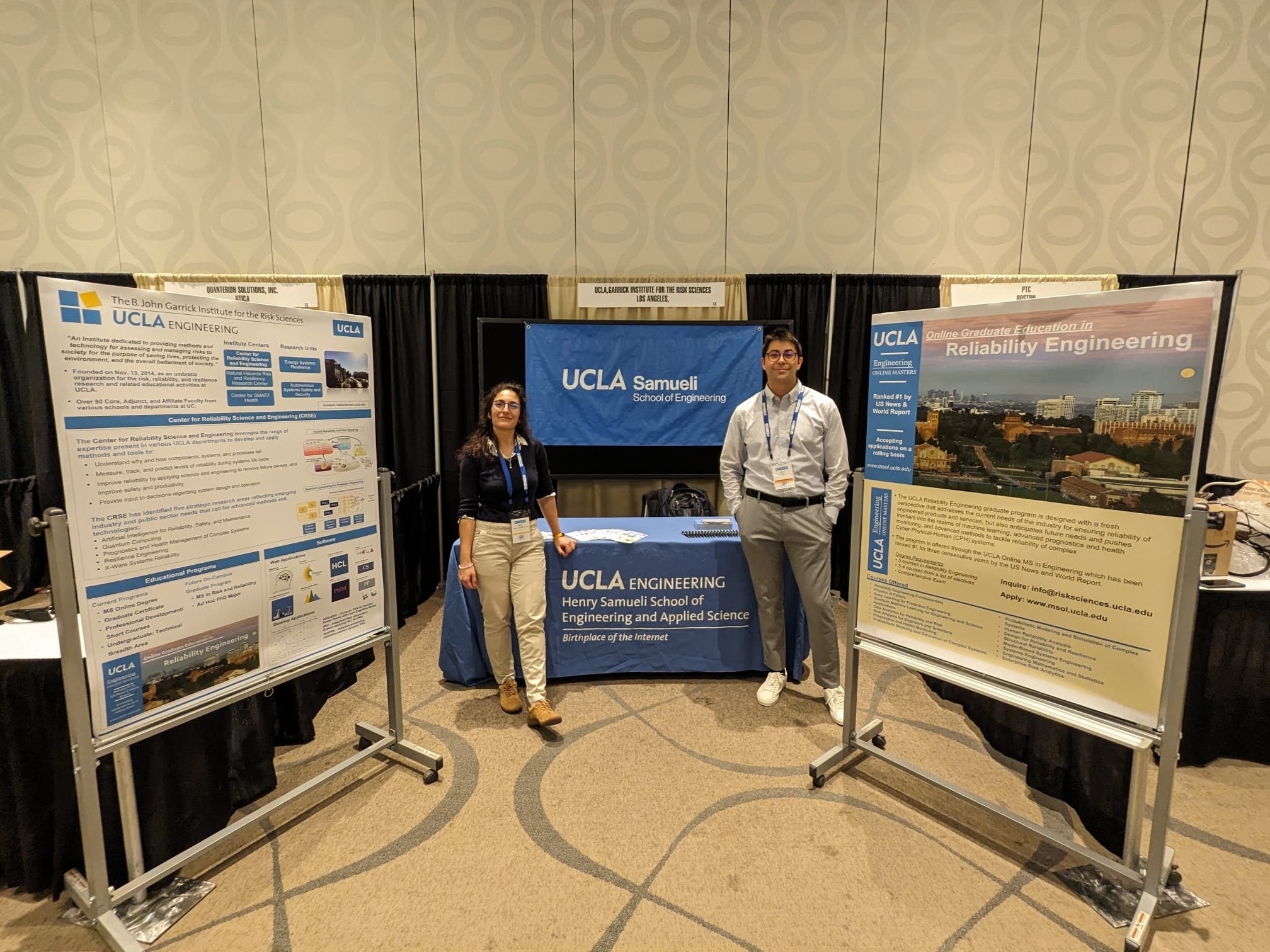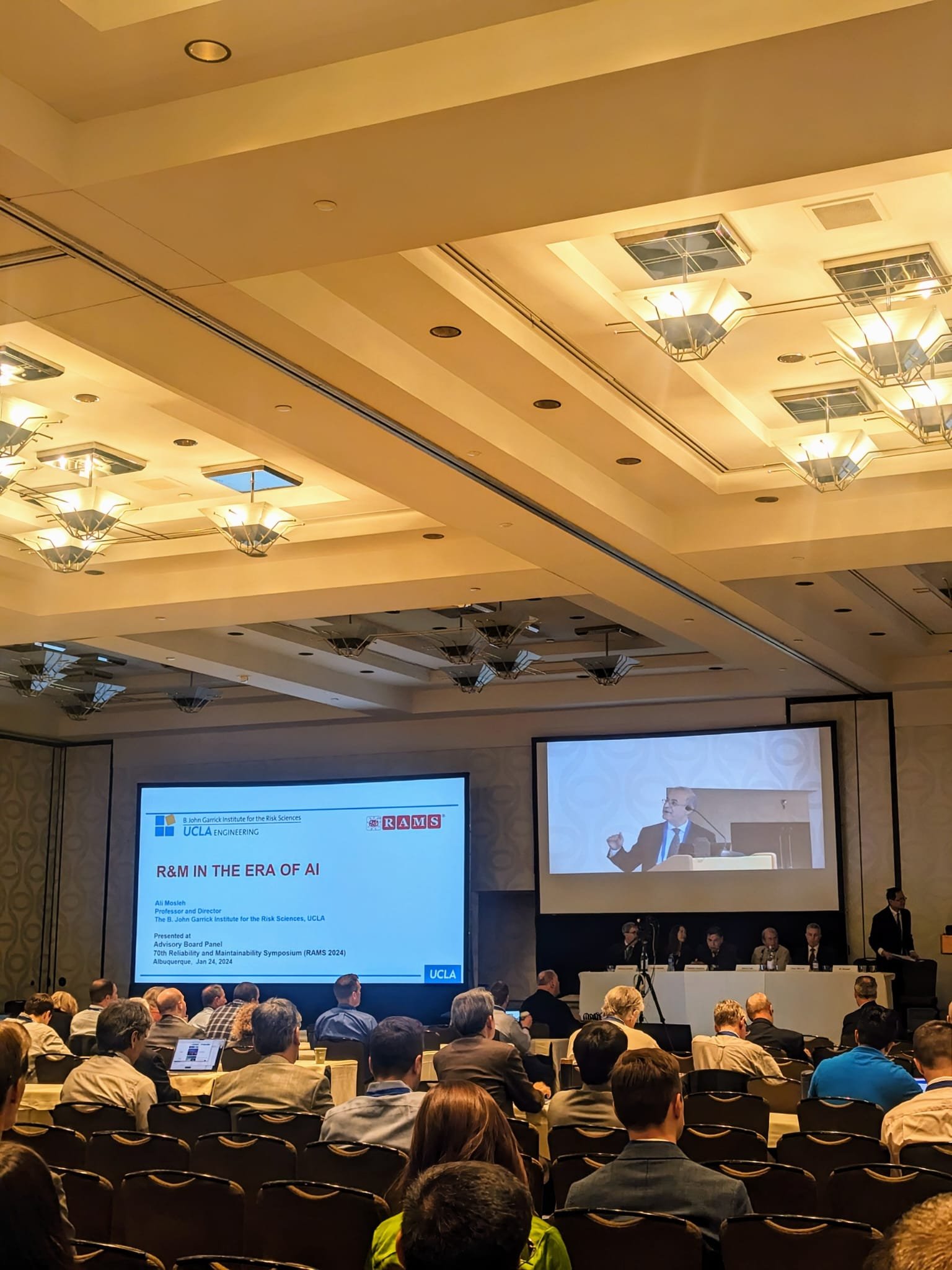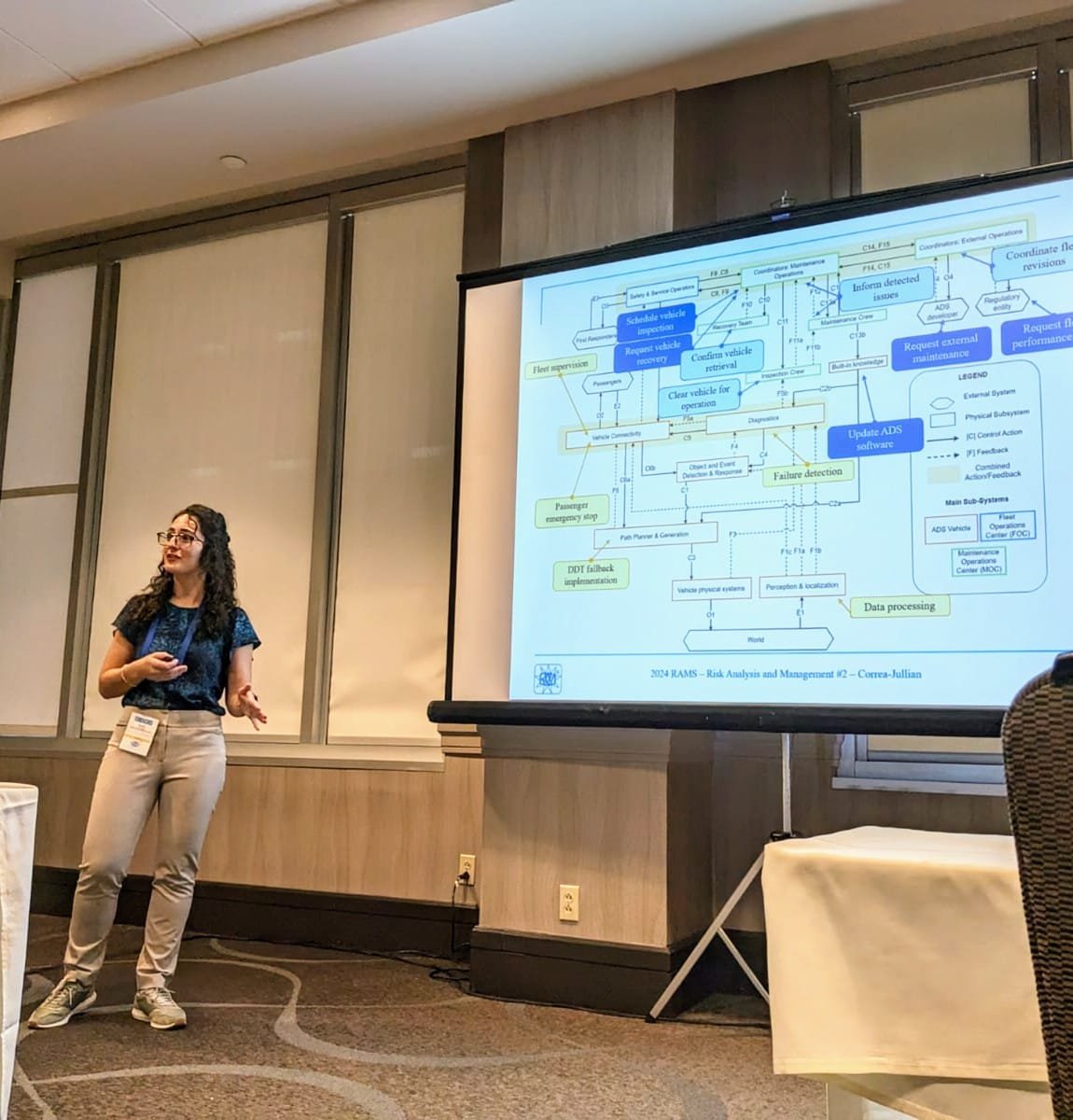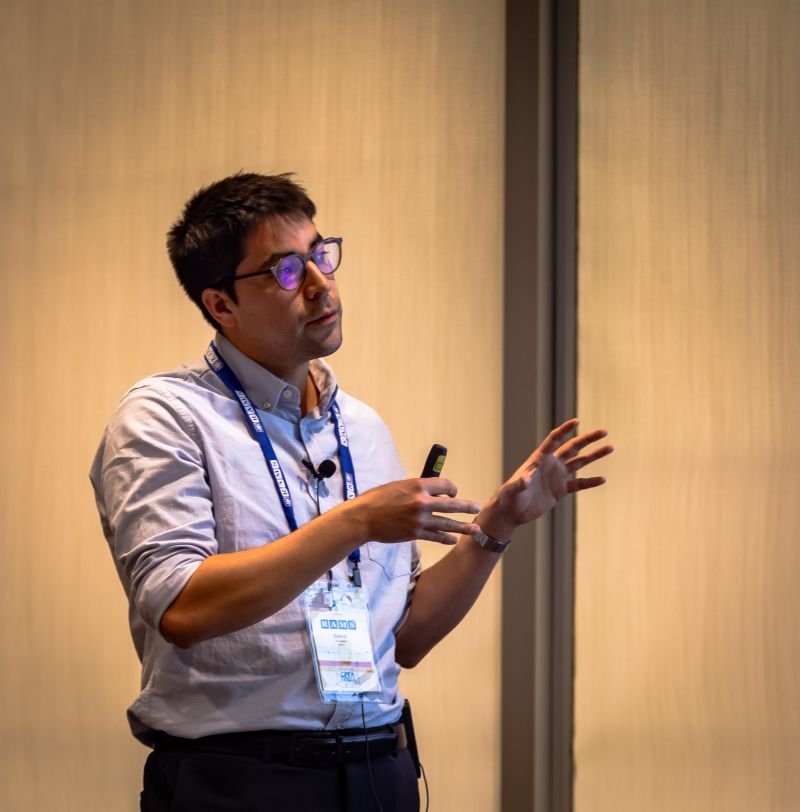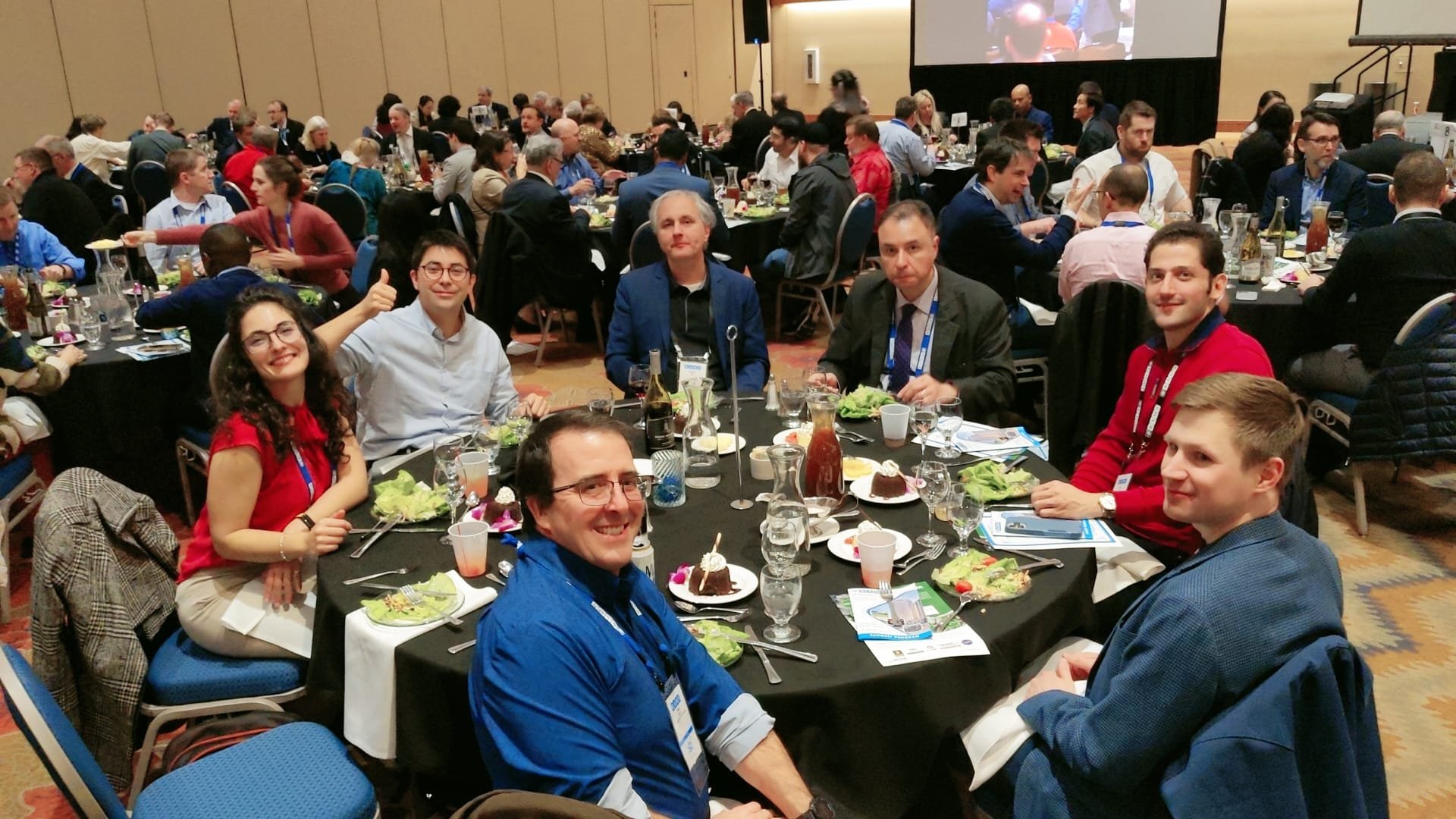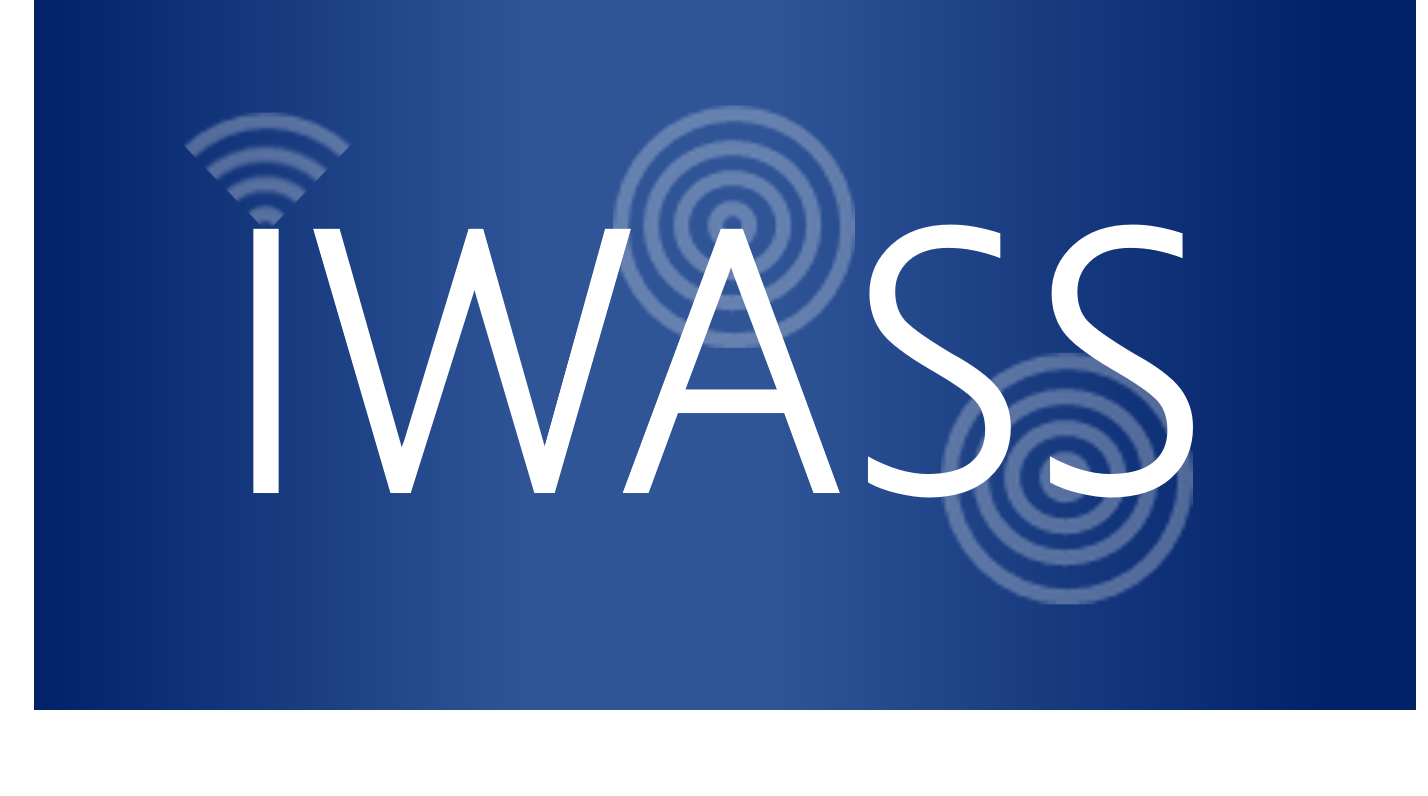Risk Institute as Exhibitor and Presenter at the 70th Annual Reliability and Maintainability Symposium (RAMS)
/The Garrick Institute for the Risk Sciences will participate as an Exhibitor and Presenter at the 70th Annual Reliability and Maintainability Symposium (RAMS) from January 22-25, 2024 in Albuquerque, New Mexico. The goal as an exhibitor is to promote new Center for Reliability Science and Engineering (CRSE), Reliability Engineering graduate program (MSOL), and Institute’s research and activities. Several papers and tutorials will be presented at RAMS 2024:
Paper: "An STPA-based analysis of Automated Driving Systems fleet maintenance activities"
This paper is within the framework of project titled, “Operational Safety for Level 4 Automated Driving System Fleets” at the Safety and Reliability of Autonomous Systems (SARAS) research unit at the Garrick Institute.
Abstract: Automated Driving Systems (ADS) are complex systems composed of several sub-systems whose interaction may lead to emerging properties and unintended behaviors. The expected deployment of vehicles equipped with SAE Level 4 (L4) ADS for Mobility as a Service (MaaS) in the medium future requires a thorough operational safety analysis. The application of risk assessment methods to ADS technologies has been mostly limited to hazards originating from hardware or software malfunctions. Nevertheless, risk analyses of complex systems must also include organizational safety and human-related issues, as they are crucial in ensuring ADS operational safety and gaining the public's trust. In particular, MaaS operations add safety aspects that require appropriate methodologies to be addressed, such as passengers’ behavior, fleet operators, and communication between fleet operators, ADS developers, and ADS vehicle manufacturers. Identifying and analyzing sub-systems’ and emergent failures is crucial for preventing and mitigating risks during operation. This work presents the application of a system-level System-Theoretic Process Analysis (STPA) to L4 ADS fleet employed for MaaS. This method is employed to identify key control actions and responsibilities of multiple agents vital in supporting the safe operation of the ADS vehicles. This work studies the interaction between distinct fleet operator agents dedicated to fleet monitoring and vehicle maintenance tasks. The present analysis focuses on identifying safety hazards that may occur during vehicle inspection and maintenance activities. Identifying key roles and responsibilities of key actors within the L4 ADS fleet ecosystem may lead to more robust safety barriers, including procedure development and crew training.
Paper: “Quantum-based Combinatorial Optimization for Critical Infrastructure Management”
Abstract: Over the last five years, quantum computing has attracted the attention of a wide variety of research fields with the promise of tackling challenges that currently are infeasible for traditional computing techniques. While quantum computing encompasses many different disciplines, such as quantum machine learning and quantum chemistry, recent advances in the subfield of quantum combinatorial optimization are especially interesting for the risk management and reliability optimization community. However, most of the literature on the topic presents abstract case studies based on problems of low complexity, making it difficult to truly assess the technology's current level of maturity. Thus, this paper presents a condensed review and benchmark of quantum combinatorial optimization, focusing the discussion on the Quantum Approximate Optimization Algorithm (QAOA), arguably one of the most promising quantum optimization approaches in the current literature. A case study regarding the identification of important nodes within the context of critical infrastructure is presented to assess the current state and limitations that the QAOA presents for the field. The case study is showcased in a simulated environment, reflecting ideal conditions assuming a perfect (noise-free) quantum computer. The results obtained indicate that a series of practical limitations and challenges arise when using quantum-based combinatorial optimization approaches in a non-abstract case study. A discussion of these limitations and some feasible solutions to explore in the future are presented at the end of the paper.
Tutorial: Quantum-based Combinatorial Optimization: Applications and Challenges
Abstract: Quantum computing has risen in popularity over the last five years. Multiple companies and governmental agencies have dedicated special funding to push forward the development of the technology. However, there is an important gap between theoretical research in the field and practical applications. In order to close this gap, it is fundamental to understand what the current capabilities, limitations, and challenges of the field are. This RAMS24 tutorial session aims to bridge the aforementioned gap by bringing the field closer to both practitioners and researchers in the area of risk and reliability assessment. The focus is placed on quantum-based optimization, given its relevance to many areas within the RAMS community. For this purpose, a thorough exposition of the foundations of quantum computing and quantum-based optimization is presented. Additionally, two relevant case studies, related to structural health monitoring and critical infrastructure assessment, are used to exemplify the techniques in a practical context.
Tutorial: Deep Learning for Prognostics & Health Management
Abstract: The rapid evolution of the artificial intelligence landscape, besides the global trend toward Industry 4.0, made deep learning an inevitable part of the reliability, predictive maintenance and digital twin areas. Although the development of integrated and mature frameworks like Tensorflow and Keras made the implementation and deployment of deep learning-based fault diagnostics and prognostics models less challenging than ever, still “coding” remains the main barrier for many non-computer scientists in the reliability and maintenance community. In order to tackle these challenges, we have developed DataBruin: open access and web-based graphical programming environment developed at UCLA for preprocessing multi-sensor monitoring data and developing deep learning solutions in general, and for reliability and maintenance areas in particular. In DataBruin, implementation of the data flow diagrams in an intuitive drag-and-drop manner not only offers a fast prototyping and code-free platform by helping practitioners to focus on the concepts rather than the syntax but also makes the opportunity to guide them toward error-free prototyping of deep learning-based Prognostics and Health Management (PHM) models. Also, DataBruin provides standardization on the structure of deep learning PHM projects by offering a comprehensive path from preparing datasets all through the predictions and necessary assessments, besides the standard auto-generated Python code for each analysis step. Based on the open-access and web-based DataBruin, this tutorial shall discuss the concepts of deep learning and the reasons underpinning its suitability and popularity as one of the most appropriate set of techniques for dealing with massive and multi-dimensional sensor data for characterizing degradation patterns and developing PHM models. The concepts and the development methodology, including the deep learning-based PHM models, are discussed and implemented step by step via the analysis of a real-world problem encompassing a Hydrocarbon Vapor Recovery Compressor from an offshore oil & gas production rig.
The Annual Reliability and Maintainability Symposium (RAMS) is a world-renowned annual symposium alternating between east and west coast areas of the United States and has been continually conducted successfully since 1954. Its purpose is to promote the Reliability, Availability, Maintainability and Safety professions and provide training, education, recognition, and advancement of these professions.
The theme for the 70th Annual Reliability & Maintainability Symposium (RAMS 2024) is “Integrating R&M throughout the Digital Engineering Ecosystem.” RAMS 2024 will provide a mix of regular papers, tutorials and talks (presentations only). RAMS 2024 papers/tutorials/talks will address topics pertinent to Reliability and Maintainability and that are relevant to our theme such as:
Autonomous Systems, AI, Big Data and Internet of Things (IoT) Applications in R&M
Availability, Repairable Systems and Maintenance Models and Methodologies
Design Optimization Using R&M Techniques
Diagnostics, Prognostics and Health Management
FMEA and Fault Tree Analysis
Human Reliability
Life/Warranty Data Analysis and Accelerated Life Testing
Physical Reliability Models
R&M Applications in Aerospace
R&M Applications in Health Care
R&M Applications in Manufacturing, Service or Infrastructure Management
R&M Management and Business Process Improvement
Reliability Modeling
Risk Analysis and Management
Security and Dependability Analysis
Software Reliability and Testing
System Safety and Software Safety Analysis



